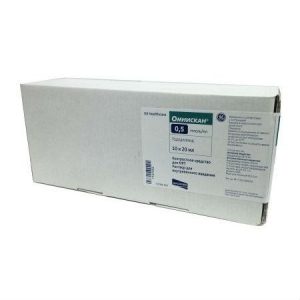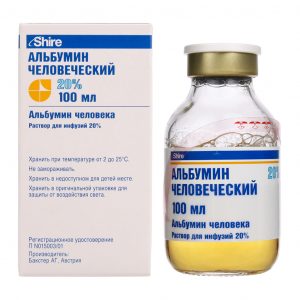Description
Pharmacological action of
Ascorbic acid has pronounced reducing properties, is involved in the regulation of carbohydrate metabolism, redox processes, blood coagulation, normalization of capillary permeability, tissue regeneration, synthesis of steroid hormones, collagen, procollagen.
Pharmacokinetics
Communication with plasma proteins – 25%. The concentration of ascorbic acid in plasma is normally approximately 10 to 20 Ојg / ml. It easily penetrates into white blood cells, platelets, and then – in all tissues, the highest concentration is achieved in glandular organs, white blood cells, liver and lens of the eye penetrates through the placenta. The concentration of ascorbic acid in leukocytes and platelets is higher than in red blood cells and in plasma. In deficient conditions, the concentration in leukocytes decreases later and more slowly and is considered as a better criterion for assessing deficiency than plasma concentration.
Metabolized mainly in the liver to deoxy-ascorbic acid and then to oxaloacetic acid and ascorbate-2-sulfate.
It is excreted by the kidneys, through the intestines, with sweat, breast milk unchanged and in the form of metabolites. With the appointment of high doses, the rate of excretion increases dramatically. Smoking and the use of ethanol accelerate the destruction of ascorbic acid (conversion into inactive metabolites), drastically reducing body reserves. It is excreted during hemodialysis.
Indications
Prevention and treatment of hypo- and vitamin deficiency vitamin C
As an adjuvant: hemorrhagic diathesis, nasal, uterine, pulmonary and other bleeding, radiation therapy, overdose of anticoagulants, infectious diseases and intoxications, liver diseases, nephropathy Addison’s sluggishly healing wounds and bone fractures. dystrophy and other pathological processes.
The drug is prescribed for increased physical and mental stress, during pregnancy and breastfeeding, during recovery from severe long-term illnesses.
Contraindications
Hypersensitivity, with prolonged use in large doses (more than 500 mg) – diabetes, hyperoxaluria, nephrolithiasis, hemochromatosis, thalassemia, glucose-6-phosphate dehydrogenase deficiency.
Precautions
Sideroblastic anemia, urolithiasis.
Recommended use
Used as directed by a physician. Ascorbic acid is prescribed orally (after eating). For prophylactic purposes, adults are prescribed 0.05 g-0, 1 g per day during pregnancy, in the postpartum period and in the case of a low content of vitamin C in milk of nursing women is prescribed 0.3 g per day for 10-15 days, after which prophylactically 0.1 g per day throughout lactation period. Children are prescribed prophylactically at 0.025 g 2-3 times a day. Therapeutic doses for adults are, when taken orally, – 05-0.1 g 3-5 times a day for children – 0.05-0.1 g 2-3 times a day.
The course of treatment depends on the nature and course of the disease.
Special instructions
In connection with the stimulating effect of ascorbic acid on the synthesis of corticosteroid hormones, it is necessary to monitor adrenal function and blood pressure. High doses of ascorbic acid enhance the excretion of oxalates, contributing to the formation of kidney stones. In newborns whose mothers took high doses of ascorbic acid, and in adults who took high doses, ricochet scurvy can be observed. With prolonged use of large doses, inhibition of the function of the insular apparatus of the pancreas is possible, therefore, during treatment it must be regularly monitored. In patients with a high iron content in the body, ascorbic acid should be used in minimal doses. As a reducing agent, ascorbic acid can distort the results of various laboratory tests (the content of glucose, bilirubin, the activity of hepatic transaminases and lactate dehydrogenase in the blood and urine).
Influence on the ability to drive vehicles and control mechanisms
During the treatment period, care must be taken when driving and engaging in potentially hazardous activities that require an increased concentration of attention and speed of psychomotor reactions.
Composition
1 tablet contains: active substance: ascorbic acid 25 mg
Side effects of
From the side of the central nervous system: with rapid intravenous administration – dizziness, feeling tired, with prolonged use of large doses (more than 1 g) – headache, increased excitability of the central nervous system, insomnia.
From the urinary system: moderate pollakiuria (when using a dose of more than 600 mg / day), with prolonged use of large doses – hyperoxaluria, nephrolithiasis (from calcium oxalate), damage to the glomerular apparatus of the kidneys.
On the part of the cardiovascular system: with prolonged use of large doses, a decrease in capillary permeability (possibly worsening trophic tissue, increased blood pressure, hypercoagulation, the development of microangiopathies).
Allergic reactions: allergic reactions up to the development of anaphylactic shock.
Laboratory indicators: thrombocytosis, hyperprothrombinemia, erythropenia, neutrophilic leukocytosis, hypokalemia, glucosuria.
Other: with prolonged use of large doses (more than 1 g) – inhibition of the function of the insular apparatus of the pancreas (hyperglycemia, glucosuria), with intravenous administration – the threat of abortion (due to estrogenemia), erythrocyte hemolysis.
Overdose
Symptoms: nephrolithiasis, insomnia, irritability, hypoglycemia.
Treatment: symptomatic, forced diuresis.
Active ingredient
Ascorbic acid
Sardlkp pharmacy terms and conditions without a prescription
lekarstvennaja form
tablets for the resorption


